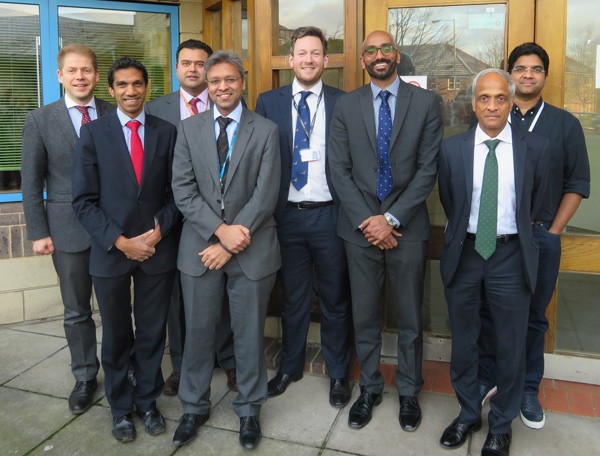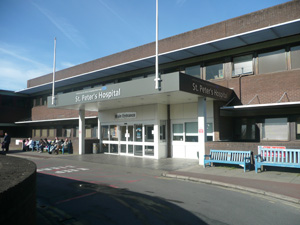Ashford and St Peter’s Urology team launch new ‘virtual’ service. | The urology team at Ashford and St Peter’s hospitals has launched a new way of working, known as virtual clinics. For many patients this will mean a quicker service and also avoiding an unnecessary trip to hospital.
Mr Sachin Agrawal, Urology Consultant and Clinical Lead for the service explains: “Many of our traditional clinic appointments are follow-ups, updating and reassuring patients with test results which are stable or checking everything is OK. This may be for conditions ranging from kidney stones to cancer follow-up. There is no real need for them to make a physical trip to hospital for this, especially if scans are normal – often, a quick phone call or letter after we have reviewed their case will be as effective.”
“We see around 13,000 patients a year within the urology service and that number is growing, so we need to find smart ways of providing the same quality of service whilst keeping up with demand. Patients also tell us that coming to hospital for a simple follow-up appointment can be inconvenient – they may have to take time off work, organise for family or friends to bring them, pay to park their car etc. If we can provide the same information more quickly and easily then it’s a better solution for everyone.”
“Patients will still be referred to the urology service by their GP in the same way and seen in clinic for an initial consultation and assessment, undergoing any necessary scans and tests (many on the same day). And of course, if their results mean further treatment is needed we will book them a clinic appointment for a more in-depth discussion.”
The virtual clinics launched in December 2017 and it is anticipated that around 3000 patients will be seen this way. The team adds: “We’ve tested this model over the last six months and are confident it will work well; of course we will monitor it closely and ask our patients what they think of the new service over the coming weeks and months, making changes and improvements where necessary. Overall, the new service should allow new patients and urgent follow-ups to be seen more quickly, improving the overall standard of care.”

